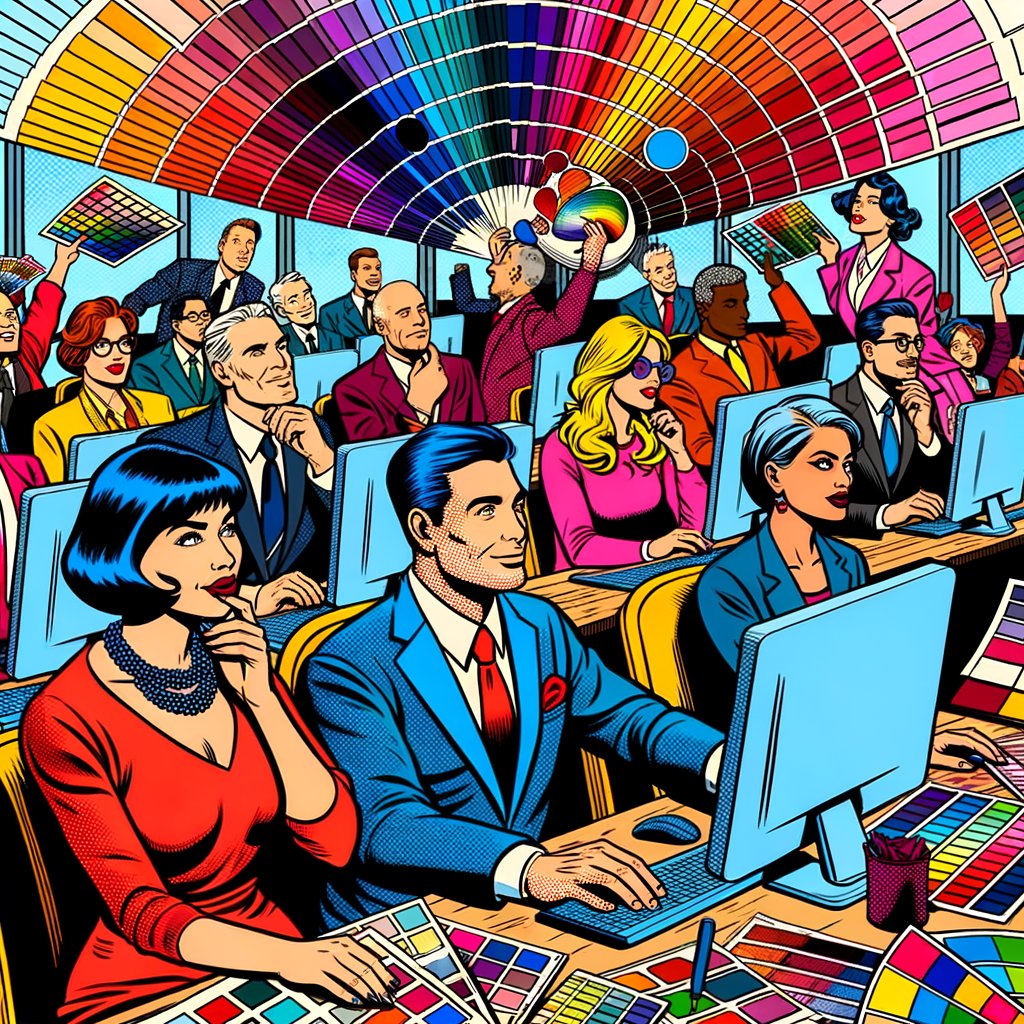
The Psychology of Color in Web Design: How to Leverage the Emotional Impact of Hues
August 25, 2024
Welcome to the captivating world of color psychology in web design! If you’re a designer, marketer, or simply someone who appreciates the power of visual storytelling, this post is for you. Buckle up, because we’re about to embark on a journey that will reveal the secrets behind leveraging the emotional impact of hues to create truly unforgettable digital experiences.
The Science of Color Perception
Before we dive into the juicy details, let’s start with the basics. Color perception is a fascinating phenomenon that involves both physiological and psychological processes. Our eyes are equipped with specialized receptors that respond to different wavelengths of light, allowing us to perceive a vast spectrum of colors. However, the way we interpret and respond to these colors goes far beyond mere physical detection.
Researchers have discovered that different colors can evoke specific emotional responses and influence our behavior in profound ways. This is because our brains have evolved to associate certain hues with various natural phenomena, cultural associations, and personal experiences.
The Emotional Language of Colors
Now, let’s explore the emotional language of colors and how you can harness their power in web design:
Red: The Bold and Passionate
Red is a powerful and attention-grabbing color that can evoke a range of emotions, from passion and love to anger and danger. In web design, red is often used to create a sense of urgency or to highlight important elements, such as calls-to-action or promotional offers.
Blue: The Calming and Trustworthy
Blue is often associated with qualities like trust, reliability, and professionalism. It can create a sense of calmness and stability, making it an excellent choice for websites in industries like finance, healthcare, or technology.
Green: The Natural and Refreshing
Green is a color that represents nature, growth, and renewal. It can evoke feelings of freshness, health, and vitality, making it an ideal choice for eco-friendly brands or websites related to wellness and sustainability.
Yellow: The Optimistic and Energetic
Yellow is a warm and vibrant color that can create a sense of happiness, optimism, and energy. It’s often used in web design to grab attention and convey a sense of fun and positivity.
Purple: The Luxurious and Creative
Purple is a color that exudes luxury, creativity, and sophistication. It can be an excellent choice for websites targeting a high-end audience or those in the arts, entertainment, or fashion industries.
Crafting a Cohesive Color Palette
While understanding the individual emotional associations of colors is crucial, the true magic happens when you combine them into a cohesive color palette. A well-crafted palette can reinforce your brand identity, create a consistent visual experience, and evoke the desired emotional response from your users.
When selecting your color palette, consider the following tips:
-
Define your brand personality: Before you even start thinking about colors, take a step back and define the personality and values you want your brand to convey. This will guide your color choices and ensure they align with your overall brand strategy.
-
Choose a primary color: Start by selecting a primary color that represents the core essence of your brand. This color should be used prominently throughout your website and should be the foundation of your color palette.
-
Add complementary colors: Once you’ve chosen your primary color, select complementary colors that work well together and support the overall emotional tone you’re trying to create. Consider using color theory principles, such as the color wheel or triadic color schemes, to ensure a harmonious palette.
-
Incorporate neutrals: Don’t forget to incorporate neutral colors like black, white, and shades of gray into your palette. These colors can provide balance, contrast, and a sense of sophistication when used effectively.
-
Test and refine: Before finalizing your color palette, test it across various design elements and user interfaces. Gather feedback from your target audience and make adjustments as needed to ensure your color choices resonate with them.
Strategic Color Application
Now that you’ve mastered the art of color selection, it’s time to apply your knowledge strategically throughout your website. Here are some tips to help you leverage the emotional impact of colors:
Establish Hierarchy and Emphasis
Use bold and contrasting colors to draw attention to important elements, such as calls-to-action, headlines, or key features. This can help guide your users’ focus and ensure they don’t miss critical information.
Create Visual Flow and Consistency
Establish a consistent color scheme throughout your website to create a cohesive visual experience. This can help users navigate your site more easily and reinforce your brand identity.
Evoke Desired Emotions
Strategically use colors that evoke the emotions you want your users to feel. For example, if you’re selling luxury products, consider incorporating rich, sophisticated hues like deep purple or burgundy to create a sense of exclusivity and indulgence.
Enhance Usability and Accessibility
Be mindful of color combinations that may be difficult to read or perceive for users with visual impairments or color blindness. Ensure adequate contrast between text and background colors, and consider providing alternative options for color-coded information.
Conclusion
Color psychology in web design is a powerful tool that can significantly impact user emotions, behavior, and overall experience. By understanding the emotional associations of colors and crafting cohesive color palettes, you can create visually stunning and emotionally resonant digital experiences that resonate with your target audience.
Remember, the key is to strike a balance between aesthetics and functionality, ensuring that your color choices not only evoke the desired emotions but also enhance usability and accessibility. Embrace the power of color psychology, and watch as your website transforms into a captivating canvas that leaves a lasting impression on your users.
Happy designing, and may the colors be ever in your favor!
